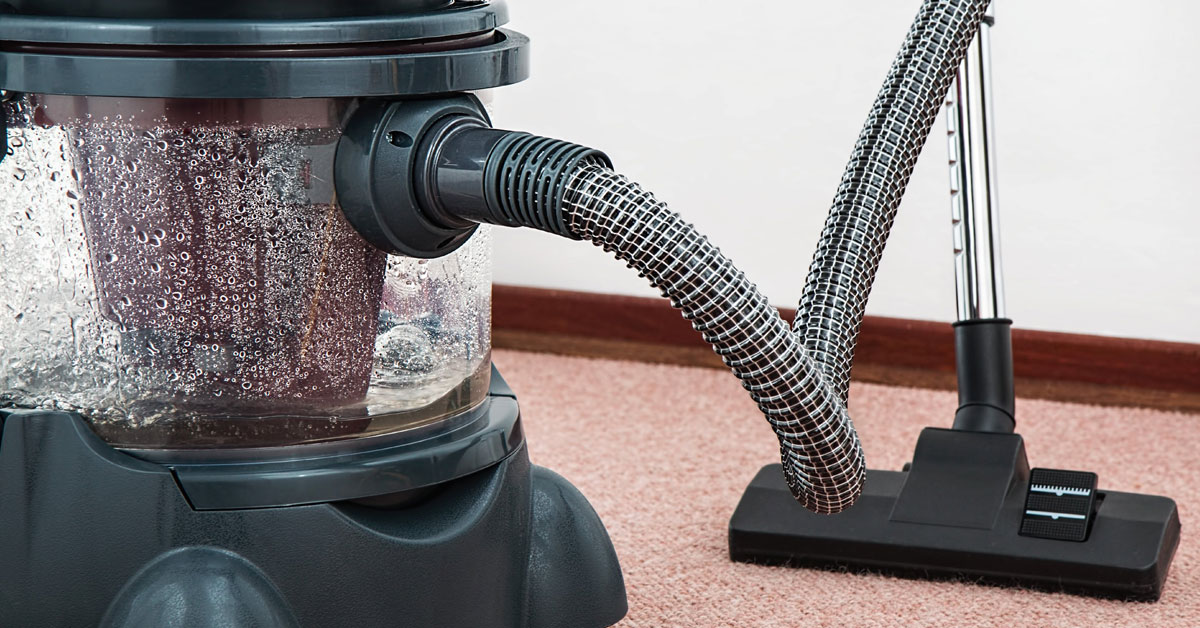Long-term care facilities must manage many different tasks that impact resident and visitor satisfaction, including carpet care. Flooring is often the first thing people notice upon entering a facility, and as a result, its appearance can have a long-term and noticeable effect on an organization. A survey conducted on behalf of Whittaker by The Harris Poll found that a majority of Americans (93%) say dirty carpet with things like stains, animal hair or food residue in a facility would negatively impact their perception of that business/organization.
Long-term care facilities must carefully select all the tools, equipment and chemistry they use to maintain carpet. First and foremost, an effective vacuum is key. Without it, employees can’t effectively prepare carpet for other forms of cleaning. With many different options on the market, it’s important for facility managers to understand the importance of a quality vacuum and the impact of a bad vacuum. With this knowledge at hand, they’ll be able to provide workers with equipment that helps carpet look its best year-round.
The impact of poor vacuum performance
Why is vacuum quality and performance so important? Consider the following facts:
- Unclean carpet leads to larger assumptions around facility maintenance. If visitors encounter dirty carpet, 58% of Americans would assume that a facility is not clean. Even if just the carpet is dirty, visitors will perceive that the entire facility is failing to uphold its cleanliness standards. Especially given concerns around COVID-19, long-term care facilities must do everything in their power to assure residents and their loved ones that cleanliness is a top priority.
- A lack of carpet cleanliness can lead to lost business. The Harris Poll found that 56% of Americans would look for an alternative facility to use/go to if it had dirty carpet. Additionally, nearly a third (31%) would never return to the facility. Thus, carpet needs to look its best every day, or long-term care facilities may have difficulty securing new leases.
- Dirty carpet results in shorter visits. The research also found that half of Americans would spend less time in a facility with dirty carpet. Many residents of long-term care facilities have frequent visitors, and it would be a shame if these friends and family members cut their visits short due to the state of the facility’s carpet.
- Unclean carpet causes negative word-of-mouth and reviews. The Harris Poll survey uncovered that 47% of Americans would tell friends, family or colleagues about the lack of cleanliness in a facility with dirty carpet. Meanwhile, nearly one in four (24%) would write a negative online review about the facility. Thus, dirty carpet not only leaves a current resident or visitor disappointed, but it can deter others from visiting or perhaps recommending the facility to others.
Vacuum quality considerations
Vacuums are an important investment for long-term care facilities. In fact, vacuuming is one of the four cornerstones of carpet care, which also includes installing matting as preventative maintenance, conducting interim maintenance and hot water extraction. Regular vacuuming, in some cases on a daily basis, helps to better prepare carpet for the next stage of cleaning.
Consider the following when selecting a vacuum:
- Design – Some facilities use upright vacuums while others prefer backpack vacuums or canister vacuums with a rolling tub. For maintaining very large areas, a long-term care facility may purchase a ride-on vacuum that can eliminate some of the stress associated with the repetitive motions of vacuuming. Consider the needs of the operators as well as the ease of use when in the market for a new model.
- Independent testing – Avoid selecting a vacuum that you’ll regret by following industry recommendations from a reputable source. For example, the Carpet and Rug Institute (CRI) has a Seal of Approval program in place to rate vacuums based on independent testing results. The certification symbol is reserved for machines that meet requirements around the ability to remove soil, contain particulates and uphold carpet appearance.
- Indoor air quality – Indoor air quality is a growing concern for long-term care facilities, as occupants often have pre-existing conditions like asthma. Keeping potential pollutants out of the air, and effectively removing them from carpet, where they like to settle, is key. Choose a vacuum with high efficiency particulate air (HEPA) filtration. According to the Environmental Protection Agency (EPA), HEPA filters “remove at least 99.97% of dust, pollen, mold, bacteria and any airborne particles with a size of 0.3 microns.”
Vacuum quality impacts the look of carpet, and poor-quality or damaged equipment can result in dissatisfied residents, and even complaints from visitors. As the Harris Poll survey demonstrates, dirty carpet can have a lasting effect on an organization’s reputation and bottom line. Long-term care facilities should equip their teams with reliable equipment, including vacuums, and proper training. They should also prioritize vacuum maintenance to create a comforting environment that residents are proud to call home.

